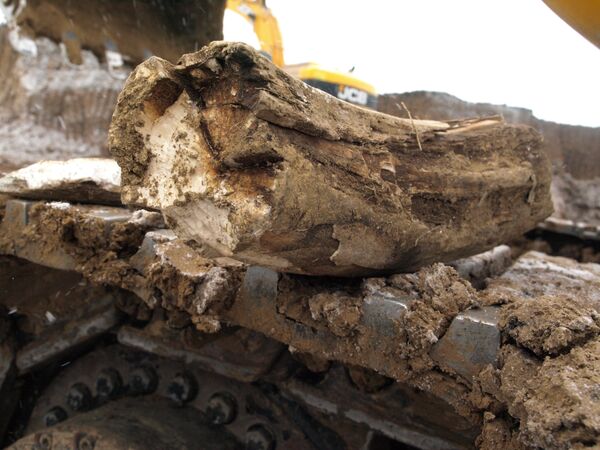MOSCOW, October 16 (RIA Novosti) - Archeologists from Bashkiria have discovered a large burial site of prehistoric animals in the region, the spokesman for the Bashkiria museum of archeology and ethnography told RIA Novosti.
According to him, such a rare discovery was made by workers by the side of the Belaya River in Karmaskalinsky area while working at a sand quarry.
"They told archeologists about the finding. Then specialists came to the place and began excavation. In a 200 area meters scientists found a great number of animal bones, including tusks, spinal bones and a hip bone allegedly belonging to a mammoth," he said.
According to him, the found bones are currently in the museum collection. Scientists will now renew and inventory the remains, specifying the animal species which the bones belong to.
"In order to determine age and sex of a mammoth, we have to wait for paleontologists to do an interesting and meticulous work," he added.
By now, the museum’s exhibition include a mammoth – a carcass of a Khazar prehistoric animal, found in the lower reaches of the Belaya River in 1970. It was restored by paleontologists in 2007 and placed in the middle of the museum room.
Such a finding has aroused local scientific interest, according to a lecturer of the department of zoology of the Bashkir State University.
"In Bashkiria mammoth bones are often found. Region’s scientific centers and museum have amassed a great collection of remains of large and small prehistoric animals. However, scientists are not so much interested in bones, as in research and identification of geographic and ecological conditions in which mammoths lived," the scientist told RIA Novosti. He added that this summer residents of Ufimskiy area have sent him a picture of an animal skull, very similar to the skull of an ancient rhino. It could be of great importance for scientific research, but "unfortunately, now it is impossible to study this territory, because of a building there."

